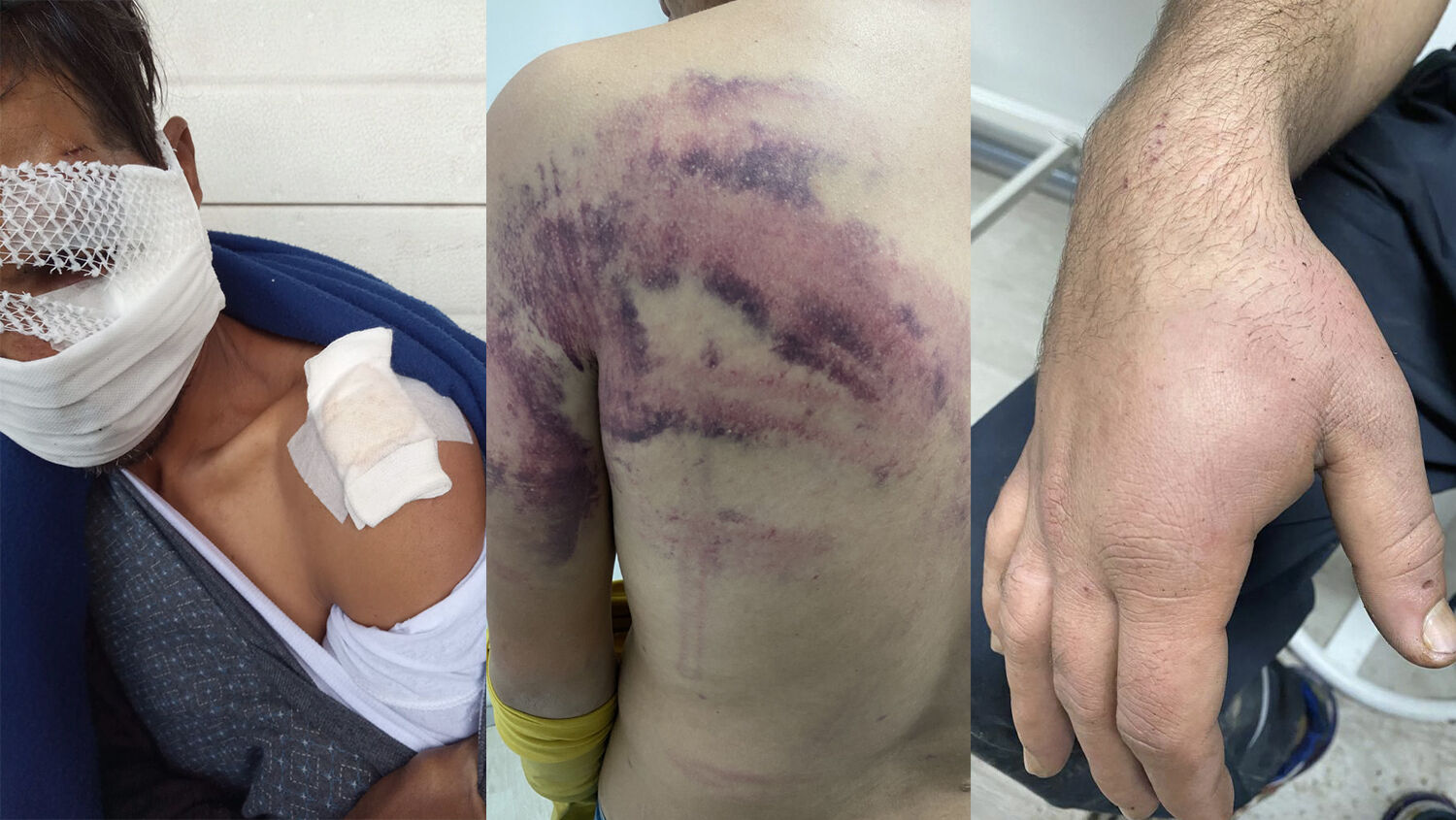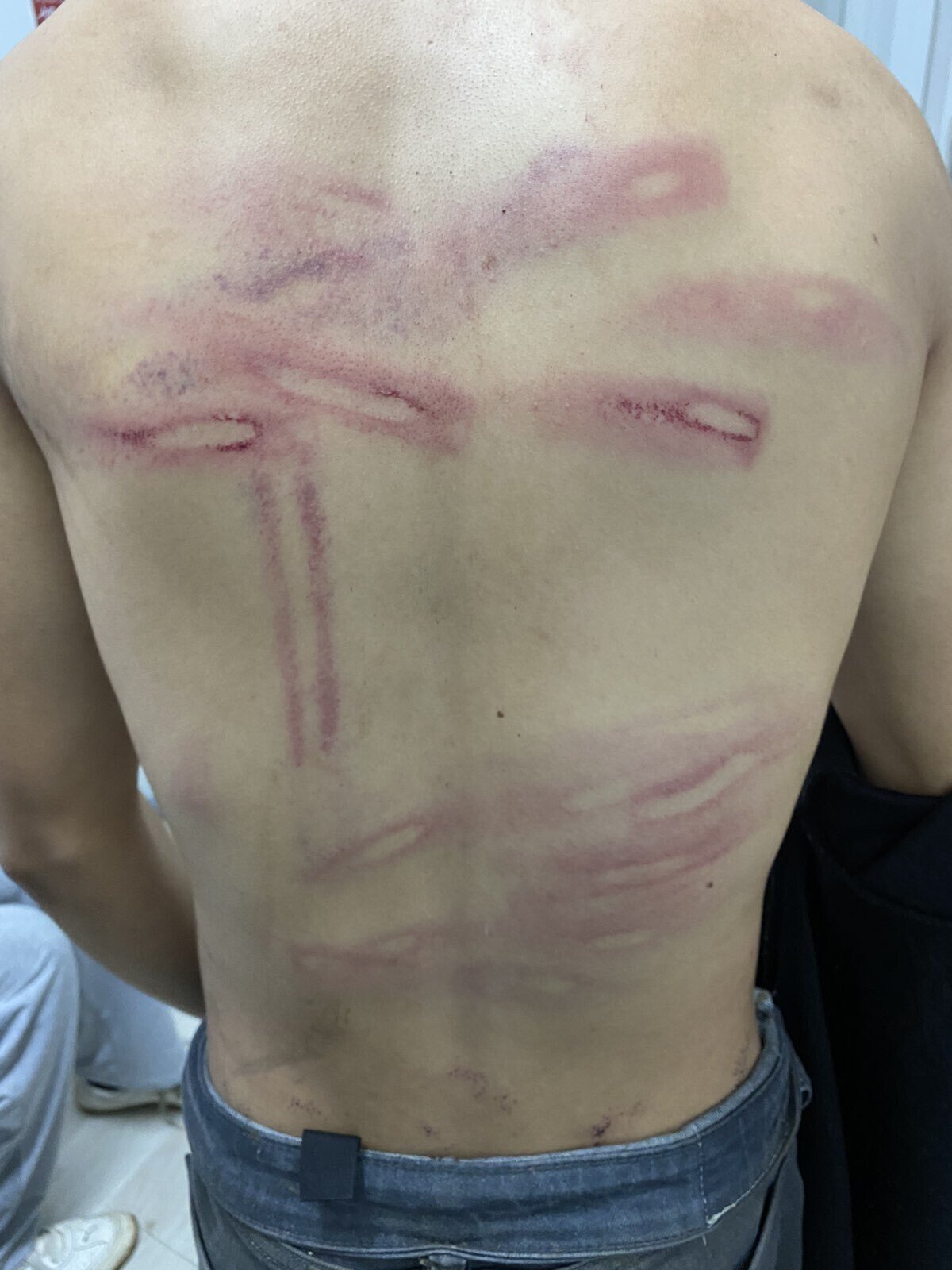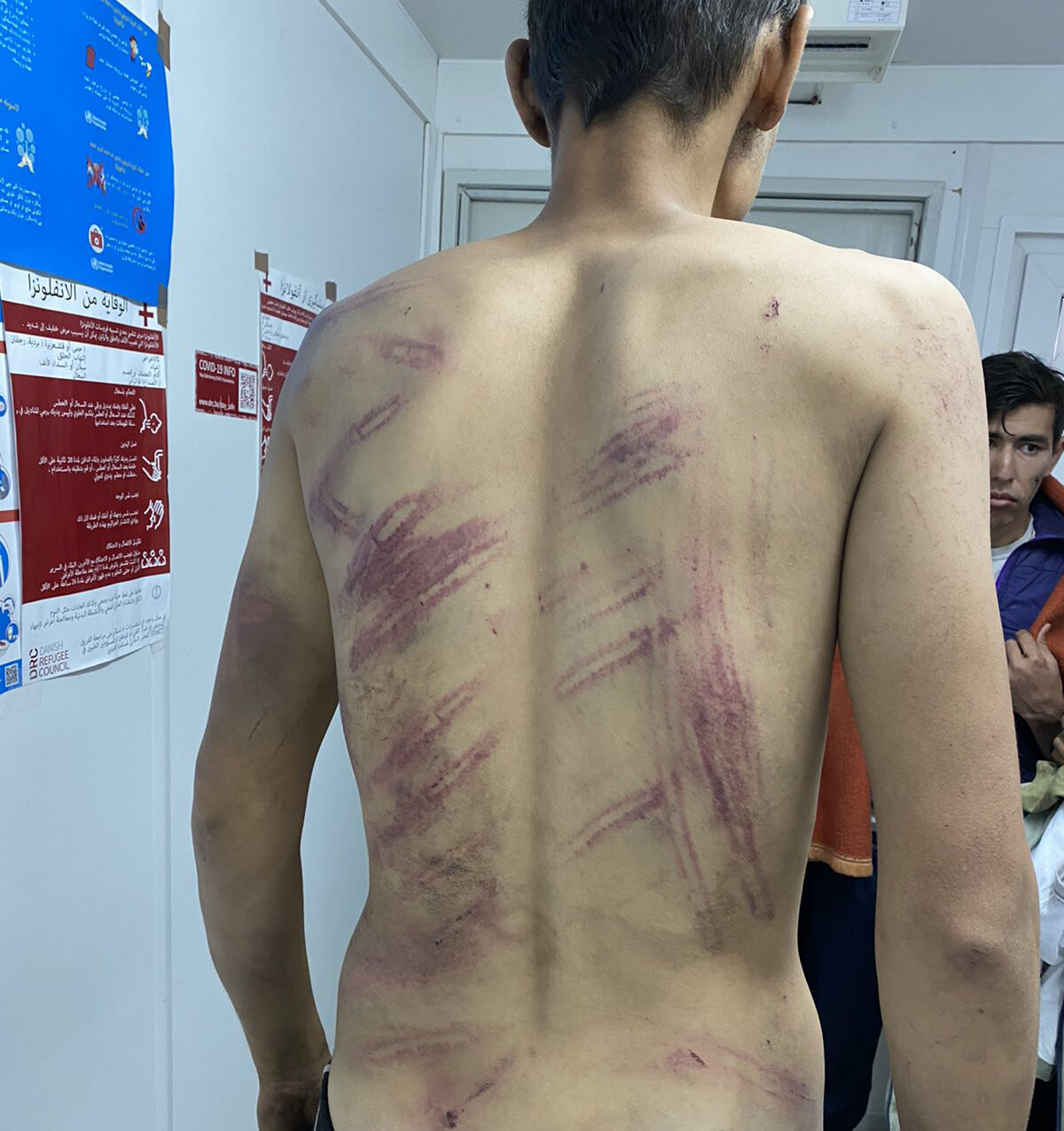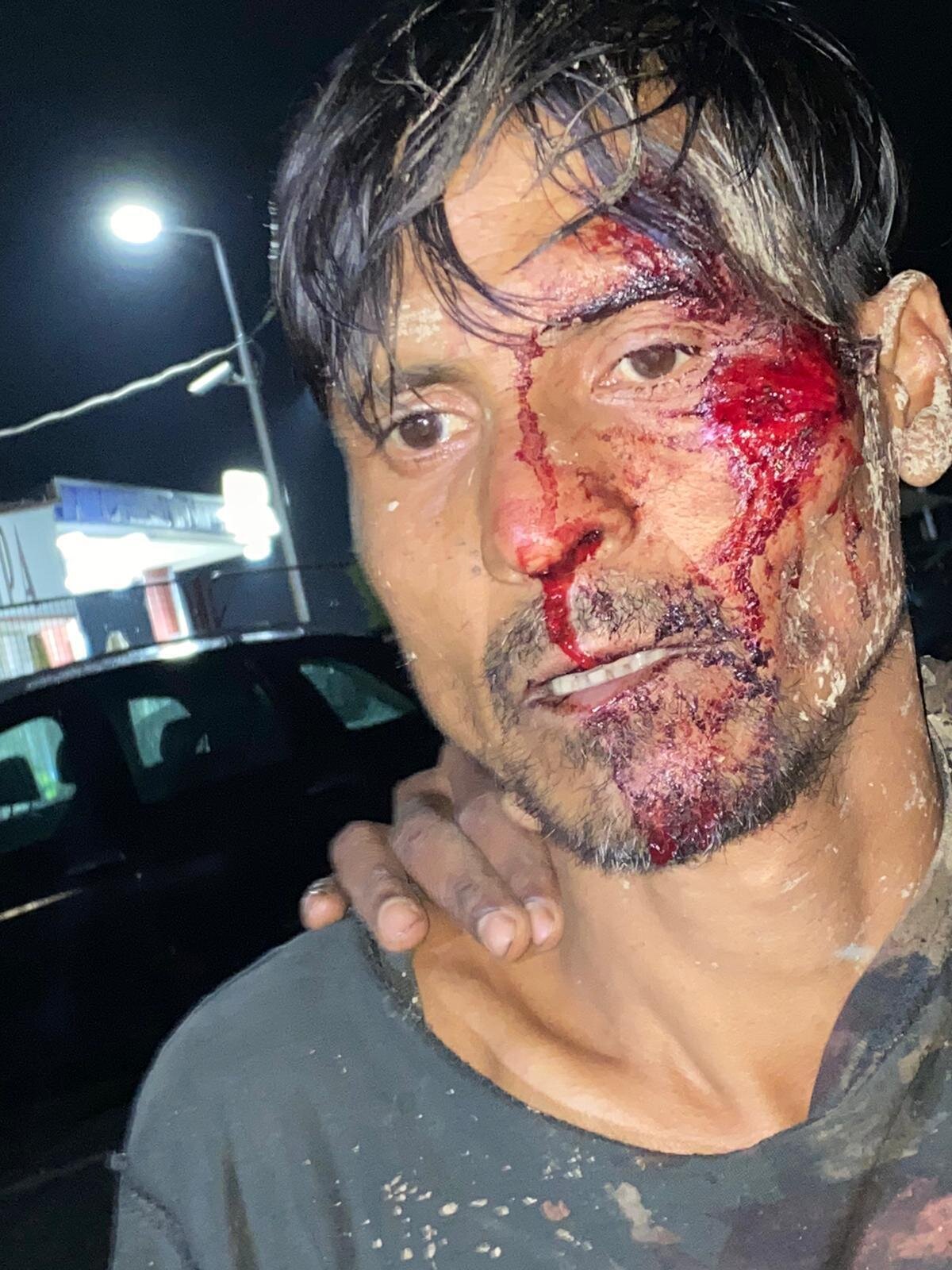
Croatian Police Systematically Torturing Migrants
“One police officer immediately grabbed [the] hair of one of us, [pulled the] head down and hit it with the knee.” This was just the beginning of the ordeal for a small group of people fleeing their war-torn homeland where they are a persecuted minority. Walking through a foreign woodland, they were apprehended by security officers, who put them in an unmarked vehicle, smashed their devices, and confiscated their money.
“Then they ordered us to take off all our clothes including our underwear. There, two police officers beat us with batons and the third one took his mobile phone and took a selfie with us without clothes. We shouted, but the louder we shouted they beat us more.”
The refugees were then confined for hours with other victims in a facility with no food, water or access to a toilet. The men were then ordered to go outside.
“There, they ordered me to strip naked and lie on the ground with my head facing the ground, and then they took batons and beat me on the back. When I turned my head, I saw that my friend was [the] second one they beat. So I lay there until we were all treated the same way. The first four of us were on the ground, and we lay next to each other, naked and beaten and the other four were ordered to lie on us, like when trees are stacked, so we lay motionless for 20 minutes.”


This is not fiction nor an account from Nazi Germany or the more barbaric parts of our world today. This happened to Pakistani refugees of the persecuted Baloch ethnic group just a couple weeks ago in Croatia—a prosperous democracy and European Union member state popular with Western tourists. The refugees were rounded up in a town near Plitvice Lakes National Park, one of Croatia’s biggest tourist attractions.
The Croatian police then sent the group back the way they came, across the Bosnian border, warning them:
We don’t care where you are from and whether you will return to Bosnia or to your country, but you will not go to Croatia. Now you have all your arms and legs, because we were careful how we hit you—and next time it will be much worse.
This is just one story collected by the Danish Refugee Council (drc) of violent incidents involving Croatian police and refugees during the week of October 11. drc Secretary General Charlotte Slente said:
The testimonies that the Danish Refugee Council has collected from victims of pushbacks are horrifying. Multiple reports, from different groups of people, of different nationalities—more than 75 persons in one week—who have all independently reported inhumane treatment, savage beatings and even sexual abuse. We need to see action to put a stop to the systematic use of violence.
Another story the drc collected involves five Afghan migrants who were caught crossing from Bosnia into Croatia. When police appeared, one of the men fled and the other four were rounded up and sent to a courthouse a couple of days later to give evidence on the man who ran, supposedly because he made threats against the police.
Once the trial was concluded, the group was taken to an unknown location where “they were handed over to 10 armed persons, dressed fully in black, with full-face balaclavas, army boots and with the torches [headlamps] on the forehead.”
The officials drove them to another location where, once outside, the migrants were ordered to strip to their underwear. All of their belongings were set afire. They were ordered to lie down on their stomachs.
That’s when the beatings began. The captors even brought a whip for the occasion.
“Midway during the beating, one of the men in black penetrated [one of the captive’s] anus forcefully with a branch. The penetration was done over the underwear. During this particular moment, the rest of the men in black were laughing …. Penetration caused bleeding that the victim [became aware of] later on.”
Such sick stories makes one wonder if anything ever happened to the perpetrators of these dehumanizing assaults. Responding to queries from Al Jazeera, a representative of Croatia’s Ministry of the Interior claimed that the allegations of police brutality came without any “facts, proof or at least basic information which could be verified.”
This despite the fact that the tortured man was examined by a doctor in Bosnia-Herzegovina who verified his injuries. Dr. Mustafa Hodžć affirmed that the man “had wounds all over the back of his body, on his back and legs. I can confirm the signs of clear sexual violence. … I have never seen anything like it.”
The Interior Ministry also stated that, if there were any cases of police brutality, they would be considered “irregularities.” But allegations of the Croatian police systemically torturing refugees have been made for quite some time.
For example, according to an Amnesty International report from June, men dressed in uniforms “identical to those used by Croatia’s Special Police,” in an attack similar to the ones previously described, apprehended 16 asylum-seekers from western Asia on the night between May 26 and 27, took them to a location near Plitvice Lakes, and beat them with their batons and pistols. Afterward, “they then rubbed ketchup, mayonnaise and sugar that they found in one of the backpacks on the migrants’ bleeding heads.”
“We were pleading with them to stop and show mercy. We were already tied, unable to move and humiliated; there was no reason to keep hitting us and torturing us. They were taking photos of us with their phones, and were singing and laughing,” stated one of the migrants involved.
Earlier that month, more than 30 migrants were robbed and beaten by security officials dressed in black. The migrants, who came from places like Pakistan, had crosses spray-painted on their heads, which the officers involved said was a “cure against coronavirus.” The Ministry of the Interior at the time said that the migrants’ claims were “completely absurd.”

In April, the drc recorded 891 cases of migrants in Croatia being physically assaulted by law enforcement.
But the accusations of the Croatian authorities violently abusing migrants aren’t limited to 2020; in fact, they go back years. In an article about the abuse of migrants by Croatian authorities written in August 2018, Deutsche Welle asked whether this “[v]iolence [is] part of new EU refugee policy.”
In July 2019, Croatian President Kolinda Graba-Kitarović admitted that border pushbacks were taking place. While she stated that the level of violence has been exaggerated (which conflicts with victim and doctor testimonies), she admitted that “a little bit of force is needed when doing pushbacks.”
“A little bit of force” sounds like a euphemism for something.
As horrific as these incidents are, what is even more chilling is that the EU has been turning a blind eye to them.
The EU Observer wrote on June 23:
[The European Commission’s] silence over the distressing events at Croatia’s borders is deafening.
There has been no public denunciation, no call for the Croatian government to properly investigate the evidence or serious attempt to engage in independent monitoring.
Repeated calls by the European Parliament to investigate the abuses have been met by a tepid response, weakly pointing at difficulties in verifying claims and Croatian authorities’ inevitable denial of any wrongdoing.
Compare this to Europe’s eagerness to attack United States President Donald Trump for building a wall at America’s southern border. He isn’t accused of anything close to this bad—yet he is the one they condemn.
The European Commission gave Croatia a sizable grant earlier this year to fund its border policing on the condition of EU monitoring of Croatian border guards. According to a June 15 article from the Guardian, the EU failed to follow through with its monitoring obligations and attempted to cover up proof in order to avoid a scandal.
In response to the latest accusations of police brutality, European Commissioner for Home Affairs Ylva Johansson stated that she is taking the latest news “very seriously.” It remains to be seen whether the EU will respond to the latest allegation. However, Johansson has had her job since last year. Has she not been taking the myriad of accusations for the entirety of 2020 seriously?
All of this becomes even more frightening when placed in its historical context.
During World War ii, Croatia was a puppet state of Nazi Germany run by a highly militant and xenophobic fascist party called the Ustashi. Historian Robert O. Paxton writes of the Ustashi in his book The Anatomy of Fascism:
In May 1941, when the German army overran and split up Yugoslavia, the pre-war terrorist-nationalist Ustaša and its longtime leader Ante Pavelić were permitted to take power in the newly independent state of Croatia. Even Nazi onlookers were appalled by the disorderly slaughters in which the Ustaša massacred a soberly estimated 500,000 Serbs, 200,000 Croats, 90,000 Bosnian Muslims, 60,000 Jews, 50,000 Montenegrins and 30,000 Slovenes.
The Ustashi wanted to “Catholicize” Croatia, and they saw the predominantly Eastern Orthodox Serb population as a “heretical” obstacle to this. To solve this, the Croatian authorities devised a plan to exterminate a third of Croatia’s Serb population, expel another third to Serbia proper (which was under German occupation), and forcibly convert another third to Catholicism.
The crosses painted on some of the modern refugees’ heads are an echo of this policy.
The pinnacle of Croatia’s genocide was its concentration camp, Jasenovac, set up just a few days after the fascists gained power in Croatia in April 1941. (The Wannsee Conference in Berlin, where German authorities officially organized their plans to set up death camps in Poland—including Auschwitz-Birkenau—to annihilate Europe’s Jews, happened in February 1942.)
US Holocaust Memorial Museum estimates that 77,000 to 99,000 were killed at Jasenovac.
Our free book The Holy Roman Empire in Prophecy states:
Ustashi soldiers were recorded to have torn victims apart limb by limb, and slit people’s throats with special knives, and removed organs one by one, and smashed people’s heads with sledgehammers. Others were burned alive. No one was spared, and many of these vile acts were performed on children and infants. There are records of Ustashi soldiers cutting open pregnant mothers and ripping out the unborn child.
Croatia today has been reluctant to come to terms with its history of fascism and genocide. If anything, many elements of Croatian society embrace it.
Columbia University professor of the law of genocide Menachem Z. Rosensaft wrote on June 25:
In 2016, Jakov Sedlar, a controversial Croatian filmmaker, produced a documentary film titled Jasenovac—The Truth, which potrayed Jasenovac as a benign labor camp whose number of victims had been greatly exaggerated. After attending the film’s widely-publicized premiere, Zlatko Hasabegović, the extreme-nationalist Croatian minister of culture, declared, “This is the best way to finally shed light on a number of controversial places in Croatian history.”
In 2018, the journalist Milan Ivkošić grotesquely wrote in Croatia’s most-read daily, Vecernji List, that while conditions at Jasenovac may have been severe, “there was fun in the camp. There were sporting matches, especially football, concerts, theatrical performances ….”
That’s like saying the Nazis made sure that Jews were taken good care of in the Warsaw ghetto by providing them housing and job opportunities.
Rosensaft continued:
Equally troubling is the widespread use of the Ustaša slogan “Za dom spremni,” or “Ready for the Homeland,” as a euphemism for racist or xenophobic slurs that are, in theory at least, prohibited under Croatian law. “Za dom spremni” was the Ustaša equivalent of the Nazi “Sieg Heil” salute, and its present-day use leaves little to the imagination. When the term is shouted by Croatian fans at a football match against an Israeli team, the crowd hears the anti-Semitic dog-whistle loud and clear.
Fabian Vendrig wrote:
[Za dom spremni] was engraved on a plaque installed in 2016 by a veteran’s organization at the memorial complex in Jasenovac, which was later unveiled by Croatian politicans for the Croat soldiers who fell in the Yugoslav Wars of the 1990s. This was, of course, an extremely bitter insult to the memory of the tens of thousands of Jews, Serbs and Romanians who perished there.
This kind of extreme nationalism and xenophobia is manifesting itself with the Croatian authorities’ treatment of ethnic minorities in the form of refugees and migrants.
One has to wonder where all of this is leading.
But we don’t have to wonder. We can know. Ever since the Balkan Wars of the 1990s, we knew where world events in the former Yugoslavia would lead. That is because we rely on a timeless, infallible source: the Holy Bible.
The book of Revelation prophesies of the final world catastrophe leading to the return of Jesus Christ. In chapter 13, it speaks of a “beast,” interpreted in Daniel 7 as being a world-ruling empire. This “beast” is “worshipped” by many as a seemingly invincible war-making power (Revelation 13:4). Verse 7 says that “power was given him over all kindreds, and tongues, and nations.”
As Herbert W. Armstrong proved in our free booklet Who or What Is the Prophetic Beast?, this “beast” is the Roman Empire. But this isn’t just talking about ancient Rome from classical antiquity. Pairing Revelation 13 with a related prophecy in Revelation 17 shows that there would be seven resurrections of the Holy Roman Empire throughout history (Revelation 17:10), lasting until the return of Jesus Christ to establish the Kingdom of God (verse 14).
The Holy Roman Empire in Prophecy proves that the sixth resurrection of this empire was fulfilled with Adolf Hitler and the Axis powers during World War ii. We have long forecast that the seventh, forming right before our eyes in Europe today, will function in a similar vein to how Hitler’s empire did, including his Axis friends, like Pavelić’s Croatia.
We at the Trumpet have been watching the rise of Germany for decades, specifically to fulfill the seventh and final resurrection of the Holy Roman Empire. But Germany won’t be alone in raising up this diabolical colossus. Verses 12-14 show that this last incarnation of the Holy Roman Empire will be a conglomerate of 10 separate kingdoms.
Croatia may be one of these kingdoms.
We have been watching Croatia specifically ever since the breakup of Yugoslavia. In fact, Philadelphia Trumpet editor in chief Gerald Flurry specifically pointed to Germany’s recognition of Croatia’s and Slovenia’s independence in the early 1990s, and Berlin’s military involvement in Yugoslavia in the following years, as the first military venture by the rising beast power. He said Yugoslavia was “the first military victim of World War iii.”
Mr. Flurry’s free booklet Germany’s Conquest of the Balkans is one of the best resources to understand the recent history and current events of Eastern Europe, events which will lead to a global crisis the likes of which have never been experienced before—just as the assassination of Franz Ferdinand in Sarajevo at the hands of a Serb led to the greatest world crisis to that point: World War i. Also, request The Holy Roman Empire in Prophecy to understand the full scope of history and prophecy of this empire.
Special thanks to the Danish Refugee Council for access to source material.
